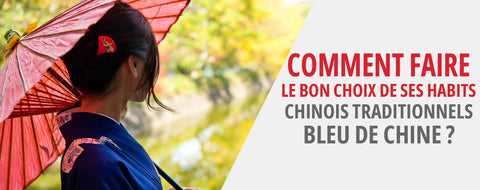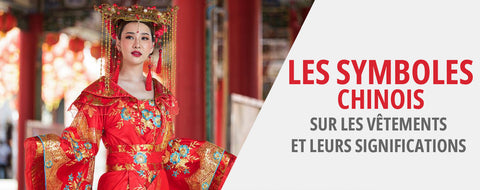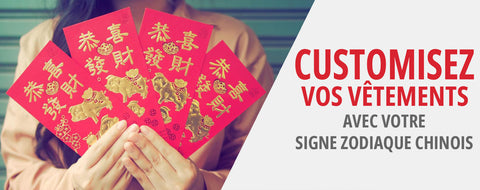
The Chinese Tea Guide
3 min reading - 1037 words
Did you know that tea was discovered in China? That is why, as the homeland of tea, China still has a strong tea culture today. For the Chinese, tea is not only a popular drink that is very beneficial for health, but a real ancestral art. Tea is therefore a central element of Chinese culture, which encompasses many customs. This culture is so important that today, China has 60% of the world's tea plantations, which are spread over more than 20 provinces of the country.
The Different Types of Chinese Tea
Chinese Green Tea
Green tea from China is certainly the most famous teas in the world, but also the one with the longest history. It is an unfermented tea, which has many virtues: antioxidant, anti-aging, weight loss... It even acts against cancer! With all these advantages, we understand why it is the most consumed tea by the Chinese. Among the most popular Chinese green teas are Longjing, Huangshan Maofeng, Biluochun, and Xinyang Maojian. Also know that Matcha, a famous Japanese tea, is a fine powder of green tea ground between two millstones, and invented in China.

Chinese Black Tea
Black tea, sometimes also called red tea, is a fully fermented tea, which has powerful aromas. Among the best known Chinese black teas, we find Keemun, Lapsang Souchong, or Yunnan.

Chinese Oolong Tea
Oolong tea, sometimes also called Wulong tea, is a little less known in the West. This is a shame, because this semi-fermented tea combines a light taste of green tea with notes of black tea. Among the most popular are Anxi Tieguanyin or Wuyi.

Chinese White Tea
White tea is very lightly fermented. It is produced from young tea shoots and buds. It is named for its very light color and the slight white film that often appears on top. It is slightly fragrant compared to black tea. To taste great Chinese white teas, try Baihao Yinzhen or Baiduman. Jasmine is also often a white tea to which jasmine flowers have been added.

Chinese Yellow Tea
Yellow tea is a very high quality Chinese tea. The tea leaves undergo fermentation and are then roasted. The process of making yellow tea is similar to that of green tea, except that the leaves are piled up loose for 20 hours in a very humid environment, to allow oxidation, and the leaves turn yellow. To taste the best Chinese yellow teas, try the famous Mengding Huangya or Junshan Yinzhen.

The History of Chinese Tea
Historians believe that the Chinese have been drinking tea for over 4,000 years! Legends say that it was Emperor Yandi who discovered it by tasting all kinds of herbs, in order to find medical remedies. One day, when he was supposedly poisoned by one of these herbs, he accidentally ingested a drop of tea that had fallen from a tea tree, which cured him, and he thus discovered tea.
For a long time, tea was used as a medicinal plant. During the Western Zhou Dynasty (1046 – 77 BC), tea was also used as a religious offering. But the earliest written record historians have found about tea dates back to the Western Han Dynasty (202 BC – 9 BC).
Chinese tea culture flourished even more during the Tang Dynasty (618 – 907), thanks to a famous thinker, Lu Yu. He is in fact the author of the book The Classic of Tea, published in 780. This book is a veritable encyclopedia of tea, detailing its history, the different cultivation and fermentation processes, the method of planting, the earthenware that should be used to promote flavor, infusion times, and even the tasting process.

Later, during the Song Dynasty, Arab merchants exported tea from Quanzhou in Fujian Province. It was then sold in southern Africa and Southeast Asia, before arriving in Europe in 1610. A Dutch ship then imported it from Macau, officially making tea a world-renowned beverage.
It is also this two-stage export method which explains why even today, in the world, there are only two words to designate tea: tea and its derivatives, and cha and its derivatives. When tea was imported by land, it came from regions of China where tea was called "cha", while by sea, tea always came from the port of Macao, where tea was called "te". Even today, we can easily know to which countries tea was imported by sea or by land by learning the word!
The Benefits of Chinese Tea
According to many scientific studies, the different varieties of Chinese tea have more than 450 types of substances beneficial to health, such as chlorophyll, vitamins of all kinds, lipids, caffeine, also called theine, and polyphenols. Thus, depending on the tea chosen, different benefits can be felt on health. Here are some of them:
- Weight loss : Green tea and Oolong tea are very effective for weight loss. Green tea, in particular, contains a wide range of vitamins and catechu, which promotes slimming.
- Reduction of the risks of cardiovascular diseases : Polyphenols contained in tea help reduce the risk of cardiovascular diseases. In addition, theaflavins contained in black tea have a significant effect on heart diseases.
- Anti-aging : research shows that tea is very rich in antioxidants, making it an excellent anti-aging agent. In fact, it helps slow down the aging of the skin.
- Reducing the risk of diabetes : A long-term study of 17,000 men and women aged 40 to 65 found that those who drank more than six cups of tea a day were 33% less likely to develop diabetes.
To taste these delicious Chinese teas in turn, discover the superb Chinese teapotss from our partner Around Tea.





